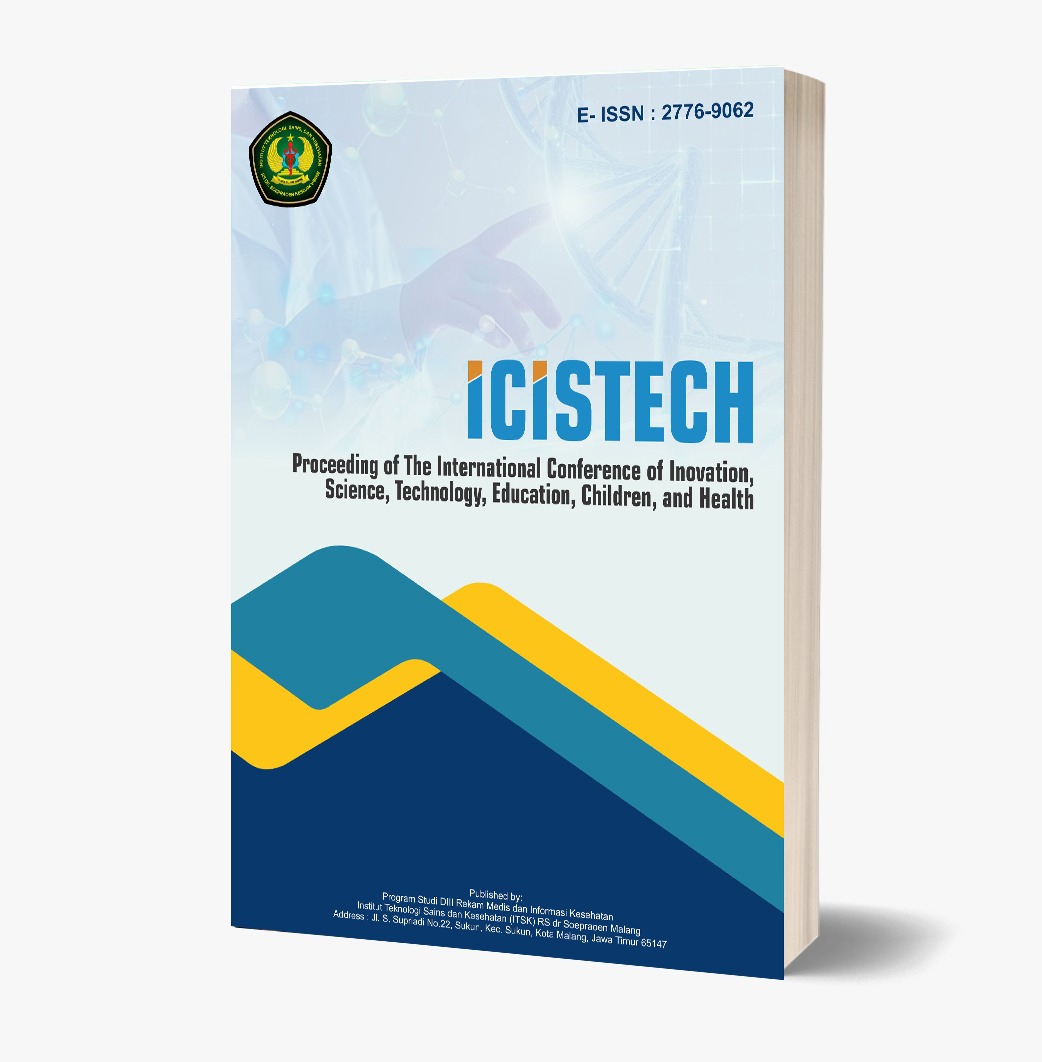The Future of Digital Health: Integrating AI, Big Data, and Telemedicine in Global Healthcare
DOI:
https://doi.org/10.62951/icistech.v5i1.276Keywords:
Digital Health, Artificial Intelligence, Telemedicine, Comparative Analysis, e-Health PolicyAbstract
The global healthcare landscape is undergoing a digital transformation, driven by the integration of Artificial Intelligence (AI), Big Data, and Telemedicine. These technologies have become essential not only in addressing immediate clinical demands but also in shaping long-term system-wide reforms. However, digital health adoption remains uneven across countries, influenced by variations in infrastructure, policy frameworks, and socioeconomic conditions. This study aims to explore how the integration of AI, Big Data, and Telemedicine contributes to healthcare system transformation through a comparative qualitative-descriptive analysis of four countries: the United States, India, Indonesia, and Rwanda. Secondary data were collected from peer-reviewed journals, government reports, and institutional publications from 2019 to 2024. Thematic analysis focused on policy direction, infrastructure readiness, implementation models, and observed outcomes. Findings reveal that while the U.S. leads with private-sector-driven innovation, India emphasizes national-scale integration, Indonesia navigates digital transformation in a geographically dispersed setting, and Rwanda demonstrates scalable solutions in low-resource environments. Despite different contexts, common challenges include interoperability gaps, ethical data governance, and disparities in digital literacy. The study synthesizes strategic insights and highlights the importance of inclusive, adaptable, and well-regulated digital ecosystems. It concludes that successful digital health implementation depends not only on technology, but also on governance, investment, and equity-focused design.
References
[1] A. Adjekum, M. Blasimme, and E. Vayena, "Elements of trust in digital health systems: Scoping review," *J. Med. Internet Res.*, vol. 20, no. 12, p. e11254, 2018, doi: 10.2196/11254.
[2] Binagwaho et al., "Twenty years of Rwanda’s health sector reform: Unlocking the potential of digital health," *Glob. Health Sci. Pract.*, vol. 10, no. 1, pp. 22–31, 2022, doi: 10.9745/GHSP-D-21-00384.
[3] Rajkomar et al., "Scalable and accurate deep learning with electronic health records," *NPJ Digit. Med.*, vol. 1, p. 18, 2018, doi: 10.1038/s41746-018-0029-1.
[4] McKinney et al., "International evaluation of an AI system for breast cancer screening," *Nature*, vol. 577, pp. 89–94, 2020, doi: 10.1038/s41586-019-1799-6.
[5] M. Cutler and N. R. Sahni, "If slow rate of health care spending growth persists, projections may be off by $770 billion," *Health Aff.*, vol. 32, no. 5, pp. 841–850, 2013, doi: 10.1377/hlthaff.2012.0289.
[6] Kvedar, J. Coye, and D. Everett, "Connected health: A review of technologies and strategies to improve patient care with telemedicine and remote monitoring," *NPJ Digit. Med.*, vol. 5, p. 113, 2022, doi: 10.1038/s41746-022-00649-2.
[7] Topol, *Deep Medicine: How Artificial Intelligence Can Make Healthcare Human Again*. New York: Basic Books, 2019.
[8] J. He et al., "The practical implementation of artificial intelligence technologies in medicine," *Nat. Med.*, vol. 25, pp. 30–36, 2019, doi: 10.1038/s41591-018-0307-0.
[9] J. S. Brownstein, C. C. Freifeld, and L. C. Madoff, "Digital disease detection—Harnessing the web for public health surveillance," *N. Engl. J. Med.*, vol. 360, pp. 2153–2155, 2009, doi: 10.1056/NEJMp0900702.
[10] Kementerian Kesehatan Republik Indonesia, "SATUSEHAT Platform," 2023. [Online]. Available: https://satu-sehat.kemkes.go.id/
[11] L. M. Koonin et al., "Trends in the use of telehealth during the emergence of the COVID-19 pandemic," *MMWR Morb. Mortal. Wkly. Rep.*, vol. 69, pp. 1595–1599, 2020, doi: 10.15585/mmwr.mm6943a3.
[12] L. R. Peterson et al., "Integration of telehealth during COVID-19: Lessons from Rwanda," *BMJ Glob. Health*, vol. 6, no. 12, p. e006688, 2021, doi: 10.1136/bmjgh-2021-006688.
[13] M. Esteva et al., "Dermatologist-level classification of skin cancer with deep neural networks," *Nature*, vol. 542, pp. 115–118, 2017, doi: 10.1038/nature21056.
[14] Ministry of Health and Family Welfare, Government of India, "Ayushman Bharat Digital Mission," 2021. [Online]. Available: https://abdm.gov.in/
[15] S. Bhardwaj et al., "Application of AI in real-time diagnosis and management of chronic diseases," in *Proc. 2023 IEEE Int. Conf. Healthc. Inform. (ICHI)*, 2023, pp. 129–134, doi: 10.1109/ICHI57849.2023.00025.
[16] T. Whitelaw, M. Mamas, and M. Topol, "Application of digital technologies in COVID-19 pandemic planning and response," *Lancet Digit. Health*, vol. 2, no. 8, pp. e435–e440, 2020, doi: 10.1016/S2589-7500(20)30142-4.
[17] The Lancet and Financial Times Commission, "Governing health futures 2030: Growing up in a digital world," *Lancet*, vol. 398, pp. 1727–1776, 2021, doi: 10.1016/S0140-6736(21)02329-5.
[18] W. Raghupathi and V. Raghupathi, "Big data analytics in healthcare: Promise and potential," *Health Inf. Sci. Syst.*, vol. 2, no. 1, p. 3, 2014, doi: 10.1186/2047-2501-2-3.
[19] World Health Organization, *Ethics and governance of artificial intelligence for health: WHO guidance*. Geneva: WHO, 2021. [Online]. Available: https://www.who.int/publications/i/item/9789240029200
[20] World Health Organization, *Global strategy on digital health 2020–2025*. Geneva: WHO, 2020. [Online]. Available: https://www.who.int/docs/default-source/documents/digital-health
Downloads
Published
How to Cite
Issue
Section
License
Copyright (c) 2025 Proceeding of The International Conference of Inovation, Science, Technology, Education, Children, and Health

This work is licensed under a Creative Commons Attribution-ShareAlike 4.0 International License.













